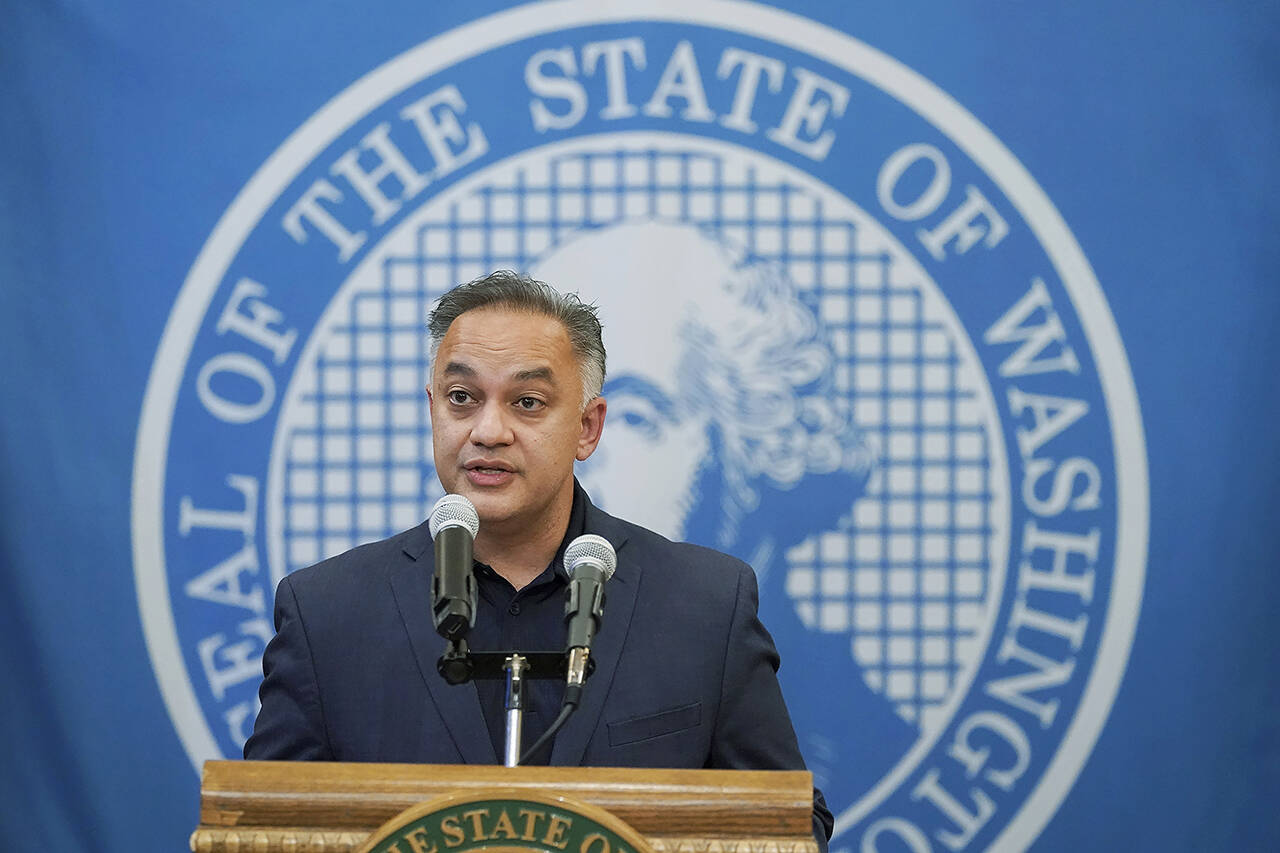OLYMPIA — State officials have a new, long-term game plan as Washington transitions to a phase of the pandemic that feels more normal.
A roadmap released Thursday, formally titled ForWArd, plots out how the state wants to prevent, monitor and react to any future waves of infection.
The goal is “coexisting safely with COVID-19 for the foreseeable future,” Health Secretary Dr. Umair Shah told reporters Wednesday.
“This is truly about hope, healing and a horizon ahead,” he said.
The plan has three main priorities: “Engagement and Empowerment,” “Prevention through Vaccines, Tests and Masks” and “System Readiness.”
Within each, the department outlines commitments to sustain initiatives that have proven effective in curbing the spread of the potentially deadly virus.
It is a game plan for “the next curveball that COVID-19 may throw us,” Deputy Secretary for COVID Response Lacy Fehrenbach said.
That includes close monitoring and genotyping of cases, a cache of masks in the case of another PPE shortage and a capacity to scale-up vaccination efforts if and when more residents are made eligible for another jab.
Specifically, it commits to maintain the ability to administer 30,000 doses of COVID-19 vaccine per day statewide and the capability of doubling that on a daily basis within one week, as needed. Similarly it commits being able to conduct 50,000 tests per day over the next six months and sustain a 60-day stock of PPE.
Fehrenbach said the state has 7.5 million masks on hand to distribute to local governments, front line workers, schools and the public.
Gov. Jay Inslee, in a statement, lauded residents’ efforts the past two years to protect themselves and loved ones against the coronavirus and said this new plan provides “one more tool to help us all keep one another safe and healthy.”
Now, instead of mandates, state Department of Health officials say the idea is to “empower” individual people to keep themselves safe using accessible vaccines, masks, tests and information about the virus and its spread.
Most of the state’s mask mandate already lifted last Saturday — a move that prompted mixed emotions in Snohomish County and around Washington.
The state also lifted mask, distancing and contact tracing requirements in schools.
Everett Public Schools Superintendent Ian Saltzman said Thursday he wasn’t sure what to expect when the week began.
“It’s been really calm. I didn’t know if I would have to get a custodian to clean piles of masks off the floors,” he said. “There were kids with masks and kids without masks. There were teachers with masks and without masks.”
An end to contact tracing for every COVID case will ease a workload burden for school districts.
“It took a toll on nurses and administrative staff,” Saltzman said.
This new chapter of the pandemic is possible because of Washington’s high vaccination rate, Fehrenbach said. Plus, the state has a “very recently acquired immunity from that huge surge of omicron,” she said.
The state has verified nearly 1.5 million positive cases of COVID-19 since the beginning of the pandemic. That’s likely an undercount.
But protection against the coronavirus isn’t uniform. County by county, the percentage of people who have gotten a COVID vaccine ranges from 88% in San Juan County to 37.9% in Stevens County. That statistic also ranges from 90.1% in residents who are Native Hawaiian and Pacific Islander to 59.9% in those who are Hispanic.
Details about ForWArd come as much of Europe faces another rise in coronavirus cases spurred by subvariant BA.2. Some fear the trend could foreshadow a spike in the United States.
State epidemiologist Dr. Scott Lindquist attempted to assuage some of those fears Wednesday. Recent genotyping in Washington, he said, suggests the subvariant accounts for less than 7% of infections here.
“It is not becoming the dominant force, and it is certainly not driving an increase in cases,” he said, later adding: “It is not proven to be more infectious, more deadly, more serious, and it remains at a fairly low level in Washington state.”
On the horizon, officials also hope monoclonal antibodies and antiviral treatments will become more widely available. They said continued federal funding will be critical to the state’s response.
“We definitely want Congress to come together and recognize that the pandemic is not over, and that we do need to fund ongoing response efforts,” Fehrenbach said.
So far, members of Congress are in a stalemate over millions of dollars of more COVID relief.
This week, Snohomish County’s health officials again reported a decline in infections, with a two-week case rate now at 106 per 100,000. Last week, 343 new cases were reported. Two dozen people were being treated for the disease in local hospitals as of Monday.
The Centers for Disease Control and Prevention still rates the majority of Washington counties — including Snohomish — as low risk under its updated metrics. Those take into account hospital capacity, admissions and infections.
Herald reporter Jerry Cornfield contributed to this article.
Claudia Yaw: 425-339-3449; claudia.yaw@heraldnet.com. Twitter: @yawclaudia.
Talk to us
> Give us your news tips.
> Send us a letter to the editor.
> More Herald contact information.

























